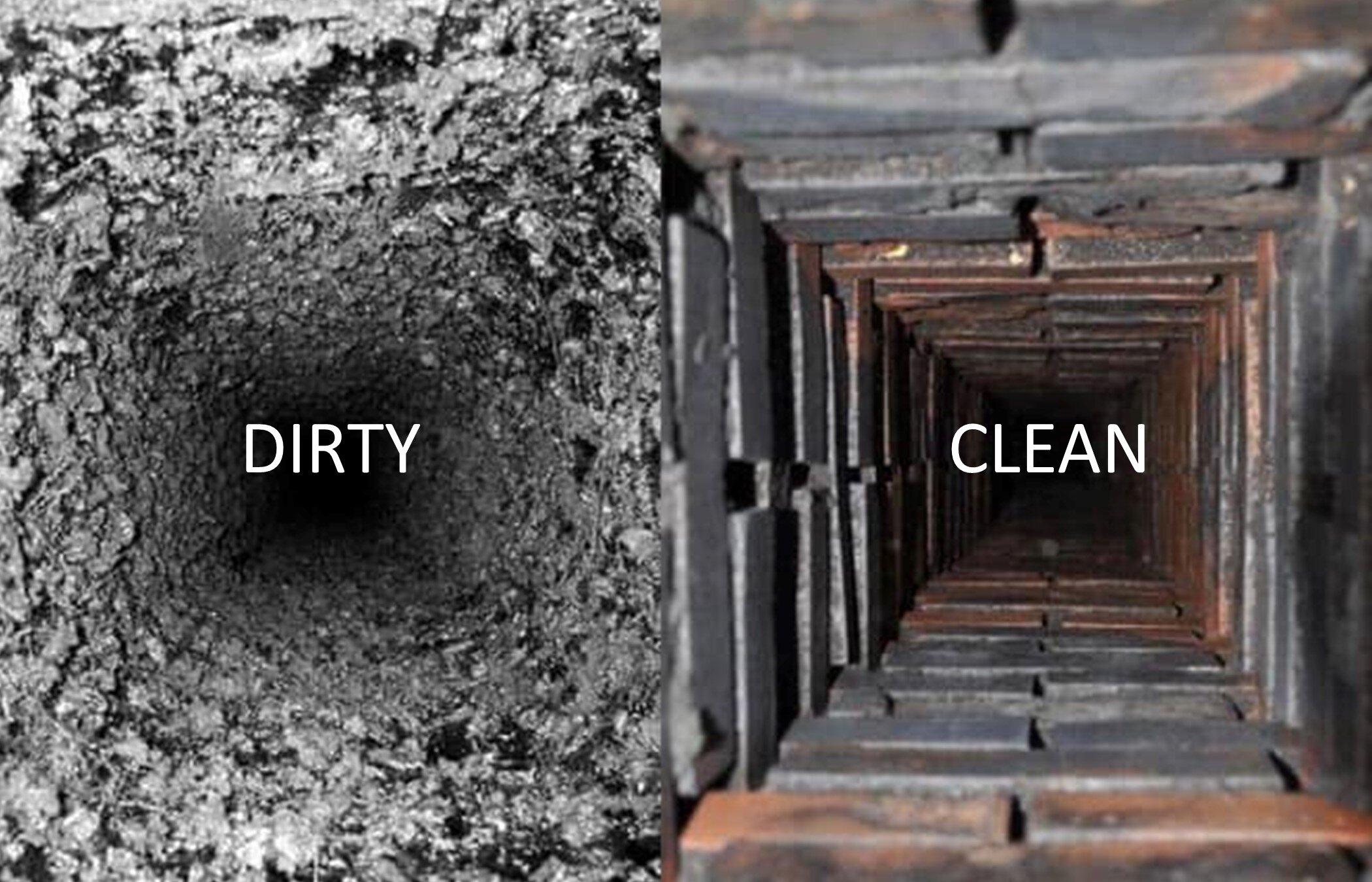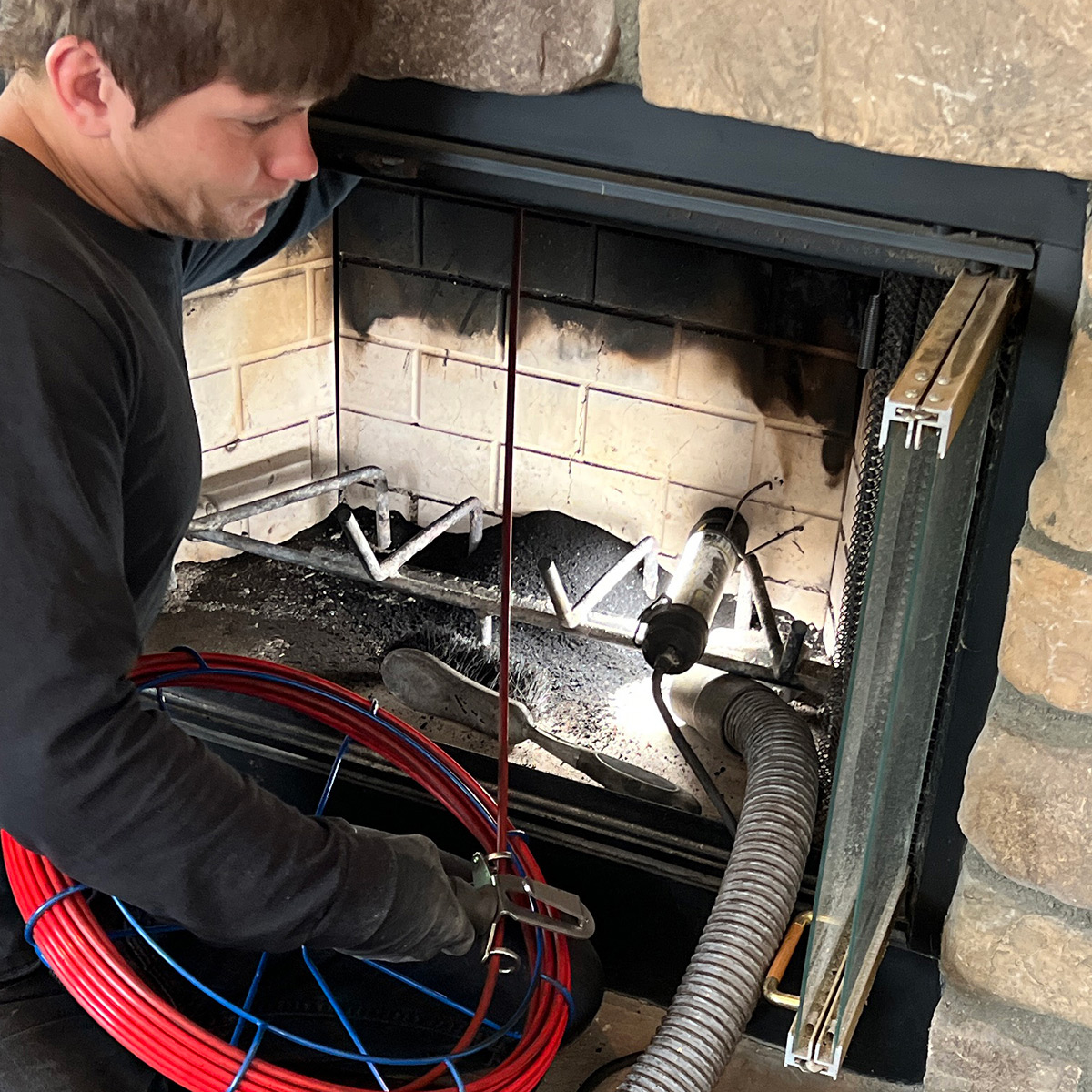The Ultimate Smokeshaft Cleaning List for Homeowners
Making sure the safety and security and effectiveness of your smokeshaft is a crucial responsibility for property owners that count on their fire place or wood range for heat during the colder months. A properly maintained smokeshaft not only boosts the overall functioning of your heating unit but likewise mitigates the risk of possible threats such as fires and carbon monoxide gas leaks. With a detailed checklist in hand, property owners can systematically deal with key maintenance jobs that are essential for a tidy and risk-free smokeshaft. From inspecting the chimney structure to eliminating creosote buildup, each action plays an important function in guarding your home and enjoyed ones.
Chimney Examination and Analysis
The inside of the smokeshaft should be inspected for any obstructions, such as bird nests or excess residue, which can present a fire hazard. Inspecting the flue for creosote build-up is critical as this very combustible compound can trigger a smokeshaft and spark fire.

Outside Upkeep and Fixes
Inspecting the exterior of the chimney for any kind of structural problems, such as splits, loose bricks, or indicators of water damages, is essential in guaranteeing the general security and long life of the chimney. In time, direct exposure to varying weather can create deterioration on the smokeshaft's exterior, possibly resulting in even more significant troubles if not addressed promptly. On a regular basis examining for any type of fractures in the mortar or blocks can assist prevent water from seeping in and creating damage to the smokeshaft framework. Loosened blocks ought to be rearranged and safeguarded to keep the integrity of the chimney. Furthermore, any indications of water damage, such as staining or mold growth, must be examined and fixed to stop further deterioration. Attending to these outside maintenance concerns in a timely way can extend the life of your smokeshaft and stop pricey repairs down the line. Positive repair services and regular evaluations are vital to maintaining your chimney in optimal condition.
Cleaning Up the Chimney Flue and Damper
To make sure proper working and safety of your chimney, normal cleaning of the chimney flue and damper is crucial. The smokeshaft flue is the flow that permits smoke and gases to exit your home, while the damper is a movable plate that visit this site right here manages airflow. Begin by evaluating the flue for any type of blockages such as bird nests, debris, or creosote accumulation. Make use of a flashlight to look for any kind of signs of damage or obstructions. Next, carefully eliminate any kind of debris making use of a chimney brush or vacuum made for this purpose. Make sure that the damper opens and shuts efficiently, as a correctly functioning damper aids regulate airflow and stops drafts when the smokeshaft is not in usage. Additionally, consider setting up a chimney cap to stop particles and pets from getting in the flue. Regular upkeep of the chimney flue and damper not just boosts the efficiency of your chimney yet likewise minimizes the danger of smokeshaft fires and carbon monoxide gas build-up in your home.
Getting Rid Of Creosote Build-up Securely
Exactly how can house owners safely remove creosote build-up from their smokeshaft to keep its optimum functioning and safety? Creosote, a byproduct of melting timber, can collect in chimneys with Continue time, positioning go a fire danger if not effectively handled. To safely eliminate creosote accumulation, start by ensuring the smokeshaft is amazing and there are no sticking around ashes. Use a flashlight to evaluate the interior of the chimney for creosote deposits.
There are numerous methods to remove creosote, depending upon the build-up's seriousness. For light creosote build-up, utilizing a smokeshaft brush or a homemade creosote remover made of equivalent parts water and vinegar can be effective (Chimney Sweep San Jose). For thicker down payments, specialist chimney cleaning company may be needed
It's important to put on safety gear such as gloves, goggles, and a mask when taking care of creosote to avoid skin irritability or breathing. Additionally, proper air flow while cleansing the smokeshaft is important to stay clear of breathing in unsafe fumes. Regular chimney examinations and cleanings can help stop creosote build-up, making sure the safety and security and efficiency of your chimney.
Fire Security Safety Measures for Smokeshaft Owners
Routine smokeshaft inspections by licensed specialists are vital to identify any blockages, creosote accumulation, or architectural concerns that can present a fire threat. Mounting a smokeshaft cap can stop particles, animals, and rain from entering the smokeshaft and triggering clogs or damages. Additionally, chimney proprietors should have a spark arrestor or smokeshaft stimulate arrester set up to protect against triggers from escaping and potentially igniting close-by combustibles.

Conclusion
By complying with the ultimate chimney cleaning list detailed in this short article, property owners can evaluate, clean, and fix their chimney effectively. Correct upkeep not only minimizes the risk of smokeshaft fires however additionally prolongs the life-span of the smokeshaft system.
Examining the chimney cap and crown for any damage is crucial to prevent water from permeating into the smokeshaft and causing more wear and tear.
Routine upkeep of the chimney flue and damper not only improves the performance of your smokeshaft but additionally reduces the threat of chimney fires and carbon monoxide accumulation in your home.
Regular smokeshaft assessments and cleansings can aid avoid creosote buildup, making certain the safety and performance of your chimney. (Chimney Sweep San Jose)
Mounting a chimney cap can prevent debris, animals, and rain from going into the chimney and causing blockages or damages. Proper maintenance not only minimizes the threat of chimney fires however likewise prolongs the life expectancy of the smokeshaft system.
Comments on “Secure Your Family with Proven Chimney Sweep San Jose Approaches”